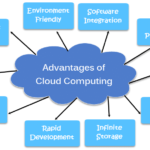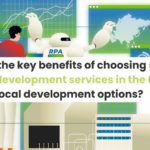
Software development methodologies have changed significantly in recent years, giving business owners increased scope within their outsourced IT projects.
Historically the majority of IT outsourcing projects were run using the waterfall model. This is a sequential design process where a detailed technical specification is shared with the outsourced development team. The development team then work through phases of analysis, design, construction and testing using appropriate technologies or architecture. This is a much more structured and rigid process than Agile software development, which is increasingly being favoured.
Related Articles

IT Outsourcing
RSK BSL Tech Team
May 4, 2025
|
|

Mobile Application Development
RSK BSL Tech Team
April 30, 2025
|
|

Software Development
RSK BSL Tech Team
April 27, 2025
|
|

Hire resources
RSK BSL Tech Team
April 24, 2025
|
|

Software Development
Praveen Joshi
April 20, 2025
|
|

Artificial Intelligence
Praveen Joshi
April 17, 2025
|
|

Pen Testing
Praveen Joshi
April 15, 2025
|
|

AI Tech Solutions
RSK BSL Tech Team
April 14, 2025
|
|

Software Development
RSK BSL Tech Team
April 9, 2025
|
|

Pen Testing
RSK BSL Tech Team
April 7, 2025
|
|

Software Development
RSK BSL Tech Team
April 3, 2025
|
|

Cloud Application
RSK BSL Tech Team
March 31, 2025
|
|

Pen Testing
Praveen Joshi
March 27, 2025
|
|

Software Development
RSK BSL Tech Team
March 25, 2025
|
|

Software Development
RSK BSL Tech Team
March 20, 2025
|
|

Software Development
RSK BSL Tech Team
March 18, 2025
|
Agile Software Methodology for IT Outsourcing Projects
Software development methodologies have changed significantly in recent years, giving business owners increased scope within their outsourced IT projects.
Historically the majority of IT outsourcing projects were run using the waterfall model. This is a sequential design process where a detailed technical specification is shared with the outsourced development team. The development team then work through phases of analysis, design, construction and testing using appropriate technologies or architecture. This is a much more structured and rigid process than Agile software development, which is increasingly being favoured.
Common components of Agile software methodologies include Scrum, Lean Development and Extreme Programming. Typically the project evolves through the collaborative efforts of the team working on it. The methodology incorporates adaptive planning, evolutionary development, early delivery, and continuous improvement. This is all highly beneficial for businesses because it encourages rapid and flexible response to change which can in turn speed up project completion to a high standard.
Whilst both methodologies still allow for the IT outsourcing company of development of the IT projects, the new Agile software development methodology allows for improvements in both quality and technical delivery.
Below we outline 4 key points that make Agile methodologies preferable:
- Communication
The Agile method promotes regular communication via daily scrums, with the delivery of phases of the project happening on a sprint basis, allowing for regular updates on progress. With the advent of numerous high-tech online conferencing facilities, as well as Skype, it is now possible to hold meetings with teams based across the world.
- Quality
Regular code reviews and refactoring are built into the Agile process. Together with the concept of mobbing and pair programming, this can promote a better quality of code.
- Transparency
The Agile project management process uses burndown charts which provide a transparent view of the status of the project for the whole team. Sprint iteration and team velocity mean that it is far easier to ascertain the estimated completion time for tasks within the various sprints. When used with burndown charts, the team will be alerted far sooner to any issues and will discover if things aren’t going to plan.
- Customer Satisfaction
Agile development works well when the customer understands the value of this methodology, and so a solid partnership is built. This is why it is vital for the service provider to educate the customer about the methodology at every step of the project. Agile software development services lend itself to customer satisfaction because they are able to see the output in the small chunks of each sprint delivery. The service provider should also offer detailed feedback during the development process. This will mean that there are no surprises at the end of the project because the customer has been involved at every stage of the lifecycle of offshore product development.
In conclusion, it is clear to see that there are significant benefits to the implementation of Agile software methodology for IT outsourcing projects.
If you have any IT development project which you are thinking about outsourcing then please contact us using this link.
Praveen Joshi
Praveen is a seasoned IT Solutions Leader and Director at RSK Business Solutions, a technology-driven IT Consulting Company that specializes in Bespoke Software Development, Agile Consulting, Mobile App Development, Smart Sourcing, and much more. For the last 17 years, he has been delivering quality custom IT solutions that help businesses achieve their goals.

 Share
Share Post
Post Tweet
Tweet Copy
Copy


